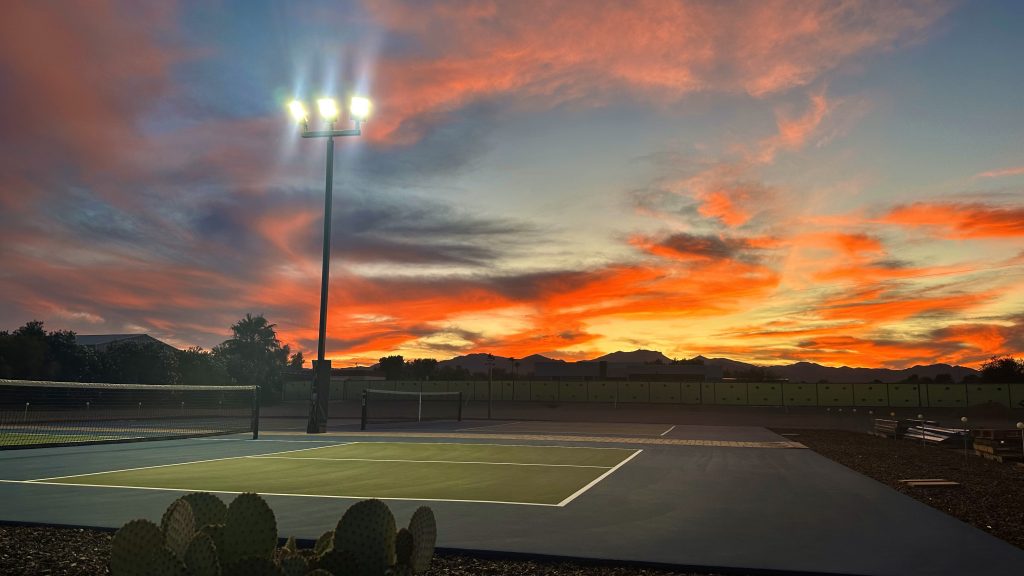One of the least discussed, but easiest ways to improve your game involves focusing on court positioning – being in “the right place and the right time.” Here are four of the biggest problems I notice players making.
Wandering or Stepping in After Your Serve
All too often, I find players standing two feet inside their baselines after serving. This gives their opponent an opportunity to hit a deep return, as most players are taught, causing the server to hit a difficult half-volley, or requiring them to quickly back-up. This often forces them to hit a pop-up or high third shot drop that can be easily attacked. Hitting this shot while moving backward is a recipe for disaster. If the momentum of your serving motion moves you onto the court, remember to take a step or two back to position yourself behind your baseline to get yourself ready for the third shot in the point.
Too Close to the Baseline to Return Serves
Returners need to stand four to five feet behind their baselines as they wait for a serve to be hit. Too many players stand on their baseline or even a step or two inside of it. I guess they’re hoping for a short serve, but this positioning is a mistake when playing against better players.
If your opponent has been hitting soft, looping serves, you can stand just a foot or two behind your baseline. But if they are hitting more powerful serves with topspin, you should stand four to five feet behind your baseline. Ideally, you want to be moving forward when you hit your return so you can use your forward momentum to help power your shot and to move more quickly towards the no-volley line with your paddle up in front of your body. Your goal as a returner is to get to the non-volley line before the serving team hits the third ball.
Backing Up from the No-Volley Line
We all know how important it is to move forward to the no-volley line as soon as practically possible. But once you get there, don’t back up – even a foot or two. When you do this, you’re making it easier for your opponents to target your feet. Shots landing at your feet often result in a pop-up or a return into the net. Even if you manage to hit an effective defensive shot, you will likely be forced back, further away from the no-volley line where you will be in even greater danger. Once you get to the no-volley line, stay there!
Face the Action
Of course, you’re going to always follow the ball with your eyes during points. But you need to “face the action” as well. What does that mean? I see too many players who are always facing forward, never turning their bodies when their team hits a ball into a corner or down a sideline. Face the action means you need to turn your body, reposition your feet and keep your shoulders perpendicular to the flight of the ball so you’re face-to-face with your opponent who will return the shot.







